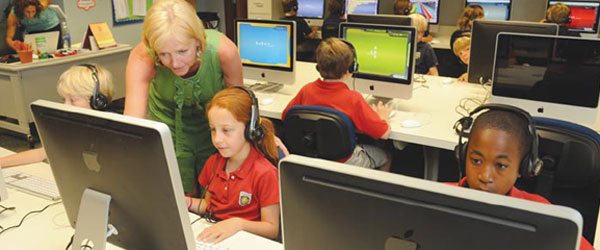by Michael F. Mascolo, PhD
There have been some interesting Op-Ed pieces in the New York Times recently about the process of learning. Here are two opposing positions on our recent penchant for “making learning fun”.
In Building Self-Control, The American Way (New York Times, February 17, 2013), Sandra Aamodt and Sam Wang respond to recent books that offer a critique of American styles of teaching, learning and parenting. For example, Battle Hymn of the Tiger Mother (Chau, 2011) provided an unapologetic defense of Chinese parenting; Druckerman’s (2012) Bringing Up Bébé extols the virtues of French parenting. Both books argue for a more “strict” approach to parenting, teaching and learning than is often the case in the United States. In their Op-Ed article, Aamodt and Wang suggest that Americans have their “own way” of instilling self-control in children, and that it is every bit as good, if not better, than those employed in other countries. In specific, they write:
Effective approaches for building self-control combine fun with progressively increasing challenges. Rather than force activities onto an unwilling child, take advantage of his or her individual tendencies. When children develop self-control through their own pursuit of happiness, no parental hovering is required. Find something that the child is crazy about but that requires active effort. Whether it’s compiling baseball statistics or making (but not passively watching) YouTube videos, passionate hobbies build mental staying power that can also be used for math homework.
For the past 50 years, there has been a steady increase – now beginning to change – in the idea that learning is something that ought to be fun. This comes, in part, from the individualism of our culture. In the United States, we prize independence and autonomy. We want children who show that they are able to do things on their own and from their own initiative. We fear that if we pressure our children, they will fail to develop individual initiative. As a result, in order to motivate children, we believe that we should build teaching and learning around children’s interests in order to “make learning fun”. This is why Aamodt and Wang are able to say something as ridiculous as, “When children develop self-control through their own pursuit of happiness, no parental hovering is required.”
Well, when children build self-control, no parental hovering is involved. The question is, of course, do children build self-control “through their own pursuit of happiness”? The answer is a resounding no. Hundreds of studies have shown that the capacity for self-control moves from “other-regulation” to “self-regulation”. In order to develop self-control, parents first regulate their children’s behavior and emotions. As parents exert control over their children’s behavior, they are showing children how to regulate their own thoughts, feelings and actions. Over time, children become able to regulate their own actions and emotions.
For example, imagine that a parent asks her four year-old to clean up her toys. Many children resist such everyday requests; they often become upset and frustrated as they embark upon their difficult assignment. Parents assist their children by breaking the task down (“Pick up your doll and put it on the shelf there”), by managing frustration and difficult emotion (“Yes, cleaning is hard work! It’s time to put on our ‘hard work hats’!”), and by ultimately guiding the child to success. Over time, little by little, children develop the skills for doing on their own what they could only previously do with the help of their mom
or dad.
What would happen if we were to wait around until our four year-old were motivated to clean her room as she “pursued her own happiness”? You can
try it – but don’t hold your breath.
Of course, to say that self-control moves from “control by others to control by the self” is not to say that parents have to be coercive or authoritarian. To regulate a child’s behavior and emotions does not simply involve ordering children around. The best parental guidance is sensitive and nurturing guidance. Sensitive guidance requires us to “see things from the view of the child” when we direct, support and scaffold our children’s behavior. It occurs when parents attempt to build bridges between the skills that children already have and the skills that parents want them to have.
More recently, in Reading, Writing and Video Games (New York Times, March 15, 2013), Pamela Paul observed how our notions of “work” and “play” seem to have become inverted:
The concepts of work and play have become farcically reversed: schoolwork is meant to be super fun; play, like homework, is meant to teach. There’s an underlying fear that if we don’t add interactive elements to lower school curriculums, children won’t be able to handle fractions or develop scientific hypotheses — concepts children learned quite well in school before television.
Paul is writing about the use of technology in the schools. She is lamenting the knee jerk impulse toward the mass use of computer games (formerly called video games) as learning technologies for young children. She notes that the primary argument for the use of video – uh, computer games in the schools is an expression of the idea that learning needs to be fun in order to be effective.
Paul also notes some irony in the ways in which we think about video games at home. Many parents are uncomfortable with their children spending long periods of time playing video games without educational themes. If our children are going to be playing video games, well, why can’t they be educational video games? And so, we seem to have switched the roles of work and play. The work of school should be fun, but the play of home should be work!
Where did we get the idea that learning was supposed to be fun? I think it comes from confusing the outcomes of development for the starting points of development. We want our children to turn out to be independent and self-reliant. Those are developmental outcomes. However, we make a mistake when we think that the way to cultivate independence and self-reliance is, well, to simply let children pursue their own independent goals. This, of course, is a formula for disaster. If we want independent, self-reliant children who are able to direct their own lives, we need to give our children the tools and knowledge that they need to do this. That requires challenge and loving direction. It also requires the understanding that learning will not always be fun. Learning can be difficult and even painful. The truly independent and self-reliant child is one who has learned to cope with this reality.


















